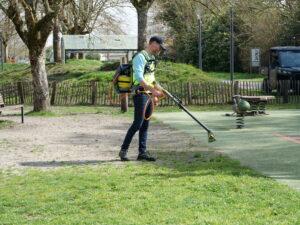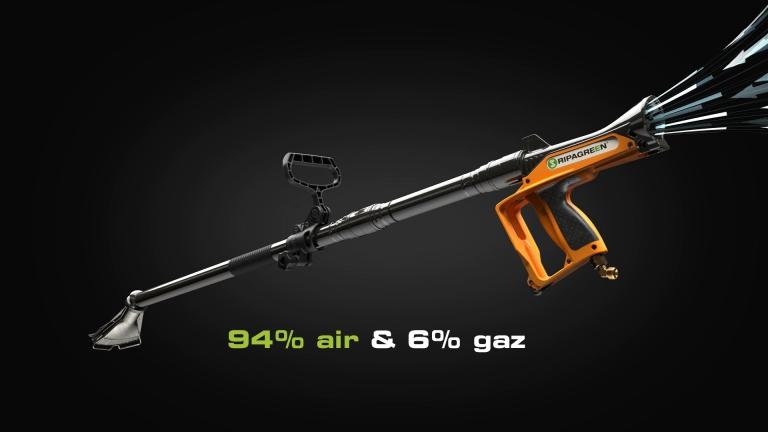
Adopted in 2014 in France, the Labbé Law prohibits the use of chemical plant protection products in public spaces such as parks, gardens, sidewalks, and roadways. Its main goal is […]

Since the increase in restrictions over chemical weeds control in many countries, thermal weeding has become an alternative to chemical weeding. But what about the consumption of thermal weeding equipment? Is it an ecological alternative to chemical weeding?
The term “thermal weeding” refers to different types of equipment that use different energies but have in common that they kill weeds by thermal shock. These solutions allow the bursting of the plant cells and the drying of the plant.
The thermal shock can be done via hot water, foam, steam, hot air, infrared or a flame. Our Ripagreen® products use hot air to produce the thermal shock necessary to dry out the weeds.
As for the energies used for these thermal weeders, they are also varied. Some devices are engine driven and therefore use gasoline or diesel, some are electric and others use gas, such as propane. This is the case for our Ripagreen products.
The environmental impact of thermal weeders varies according to the energy used. The thermal weeders with hot water or steam for example, consume water and need a motor that can be thermal or electric. The water consumption of these devices can go up to 1500L/h for models with a large tank, to which must be added the gasoline or electricity for the engine.
Regarding the hot air, infrared or “burner” models, they have gas or electricity as the only energy required for their operation. The environmental impact is therefore less than for models using water (in large quantities) coupled with an energy source (gas, diesel, electricity).
RIPAGREEN products run on propane and do not require any other energy source. What you need to know is that, thanks to our innovations and our venturi system, the hot air is created from 94% ambient air and only 6% propane. The gas consumption is therefore low, it varies from 3.06 to 4.1kg/h depending on the pressure of use, which itself varies from 1.5 to 2.5 bars.

You are now informed about the different types of thermal weeding and their energy consumption. If you are interested in the Ripagreen® high velocity thermal weeders, our team is at your disposal to answer your questions and advise you if necessary. To do this, you can contact us by e-mail at info@sefmat.com or via the contact form.
You may also be interested in

Adopted in 2014 in France, the Labbé Law prohibits the use of chemical plant protection products in public spaces such as parks, gardens, sidewalks, and roadways. Its main goal is […]

The warm weather is here, and the weeding season is starting! To help you get started, we’re offering a range of promotional offers* valid from March 15 to April 30, […]

We are delighted to announce our participation in GaLaBau, which will be held in Nuremberg from 11 to 14 September 2024. This international trade fair is a must for professionals […]